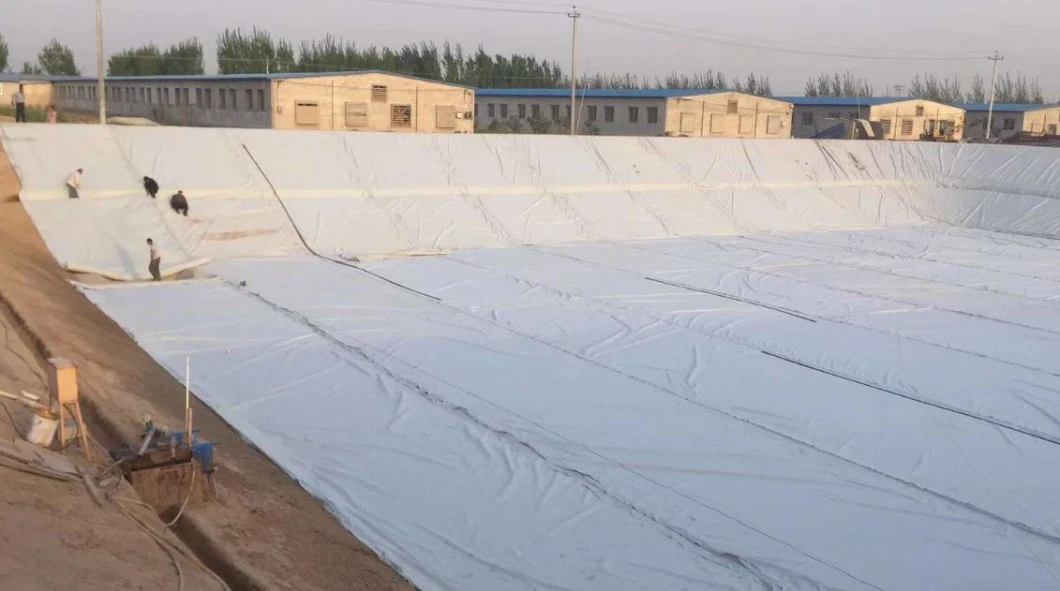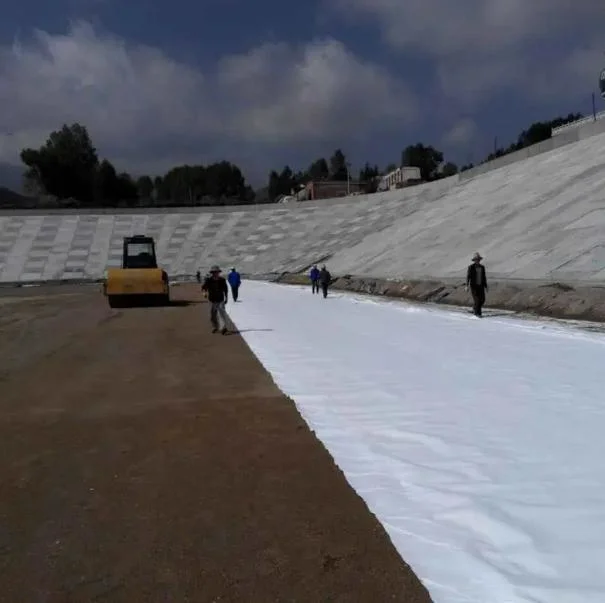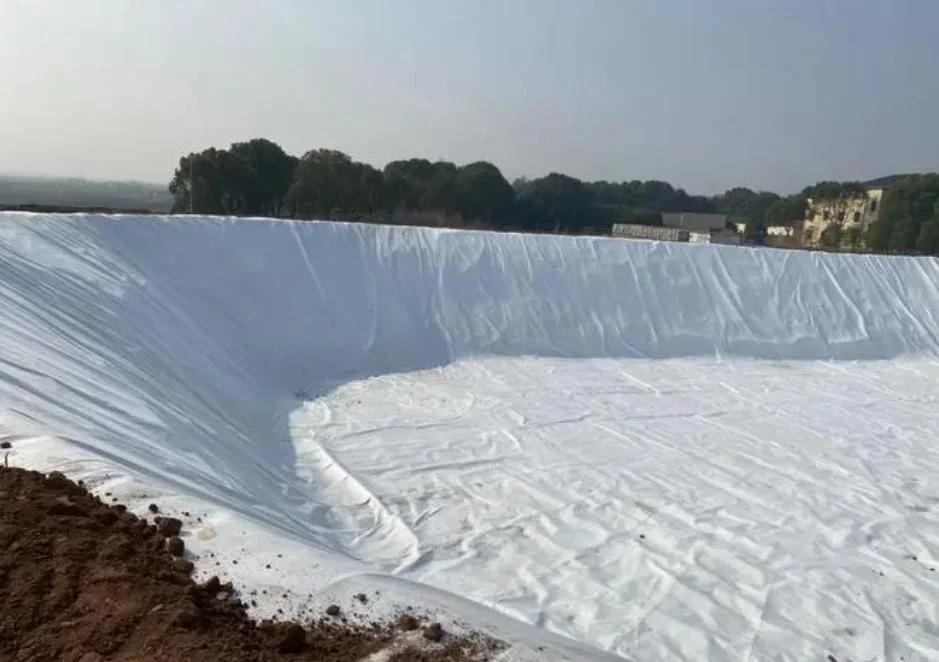

Polyester/Polypropylene Filament Spunbonded/Staple Fiber Needle Punched Nonwoven Geotextile for Filtration, Isolation, Reinformcement
Basic Info
| Model NO. | LK-TGB-099 |
| Material | PET |
| Kind | Non-woven |
| Width | 1m-8m (as Customrized) |
| Length | 50m, 100m or Customized |
| Packing | Woven Plastic Bag |
| Standard | ASTM GM13 |
| Delivery Time | Within 15day |
| Transport Package | Woven Bag |
| Specification | high-density polyethylene |
| Trademark | Looking-forward |
| Origin | Shandong, China |
| HS Code | 5602100000 |
| Production Capacity | 20000sqm/Day |
Product Description
Black/White Color Polyester/Polypropylene Filament Spunbonded/Staple Fiber Needle Punched Nonwoven Geotextile for Filtration, Isolation, Reinformcement
1.Product description:
The braided fabric is made up of polypropylene, propylene monofilament and consists of at least two parallel sets of yarn (or flat filament), one set of gauze called in the longitudinal direction (the direction the fabric travels) and the other set of transverse arrangements called weft. Weaving yarn with weft interwoven together into a cloth like pattern by different programming weaving equipment and processes is braided into different thickness and compactness depending on the different range of use, and generally the woven fabric thinner in both aspect and aspect has quite strong tensile strength (longitude is greater than latitude) and has very stable properties.

2.Main Features
1. Reinforcement effect: it is used for rock engineering such as roads, rail, airport, stone dam, anti slope berm, stop wall backfill, and edge PI, and so on, dispersive body stress increases soil modulus, limits slip of soil, and improves stability.2. Protective effect: to prevent the flushing of banks by wind, waves, tides, rain, and is used for shore protection, slopes, bottoming protection, and to prevent water and soil loss.3. Backfiltration: filter layers used for berm, dam, river and coastal stonefast, earth slope, barrier walls prevent the passage of sandy soil particles, while water or air is allowed to pass freely through.
3.Application scenario:
It is widely used in earth works, such as water, electricity, mines, highways and rail, including:(1) Filter materials for soil separation(2) Reservoir, drainage material of beneficiation in mines, drainage material of ground in higher-level construction.(3) Flushing prevention materials for river banks, slopes.(4) Reinforcement for roadways, roads, airport runnels, marsh area repairs(5) Antifreeze and antifreeze protective materials(6) Anti cracking materials in asphalt road surfaces.

4.Construction specification:
1. The fabric should only be cut with a clay knife (hook knife), as in the field, with special protection for other materials to be taken against unnecessary damage to it as a result of cutting the fabric;
2. While laying down the ILFs, all necessary measures must be taken to prevent damage to the following layer of material;
3. When laying a mattress, care must be taken not to allow stones, significant dust or moisture, etc., that have the potential to disrupt the mattress, have the potential to obstruct drains or filter nets, or have the potential to create difficulties for subsequent connections to enter beneath the mattress or the mattress;
4. At the end of installation, visual inspection of all soilwork surfaces to identify all damaged landlands, marked and patched, establishing that the surfaces laid down were free of extraneous material that could cause damage such as broken needles;
5. The connection of the sheet must follow: normally, there cannot be a horizontal connection on the slope (the connection whiskers do not intersect with their contour along the slope), except where patched.
6. If sutures are used, they should be of the same material or exceeding the fabric material and the suture should be a chemical UV resistant material. Sutures should have a distinct colour difference from the fabric to facilitate inspection.
7. Special attention was paid to stitching at the time of installation to ensure that no gravel in earthy or gravel cover was moved into the middle of the hardwood.

5.Product specification:
TMG200 / TMG315 engineered geotextile is stabilized to resist degradation due to ultraviolet exposure. It is resistant to commonly encountered soil chemicals, mildew and insects, and is non-biodegradable.
PROPERTY | TEST METHOD | MARV English | ||
GrabTensile | ASTM D-4632 | 200 lbs | 250 lbs | 315 lbs |
Grab Elongation | ASTM D-4632 | 15% | 15% | 15% |
Mullen Burst | ASTM-D-3786 | 400 psi | 450 psi | 600 psi |
CBR Puncture Strength | ASTM D-6241 | 700 lbs | 750 lbs | 900 lbs |
Trapezoidal Tear | ASTM-D-4533 | 75 lbs | 90 lbs | 125 lbs |
UV Resistance(500hrs) | ASTM D-4355 | 70% | 70% | 70% |
Permittivity | ASTM D-4491 | 0.05 sec -¹ | 0.05 sec -¹ | 0.05 sec -¹ |
AOS | ASTM-D-4751 | 0.425 mm | 0.425 mm | 0.425 mm |
Flow Rate | ASTM D-4491 | 5 Gal/min/sq ft | 4 Gal/min/sq ft | 4 Gal/min |
The geomembrane roll are in the hand sewing woven bag packing, safe and scratch-proof.The bag color can be customized, with your own logo.








